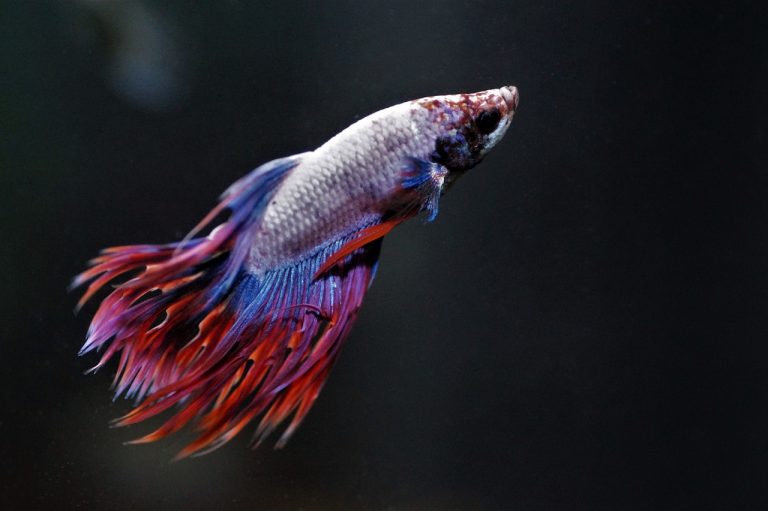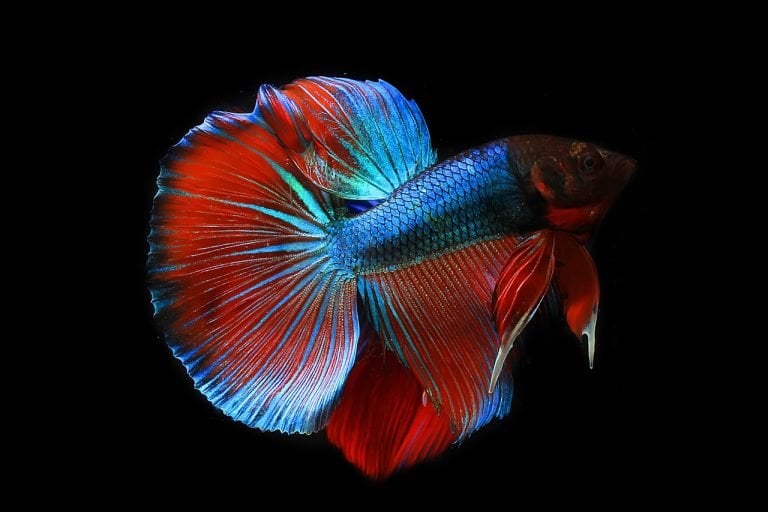In the understated elegance of aquatic habitats, the Betta fish emerges as a creature of both beauty and expression.
‘The Dancing Betta: What Your Fish’s Movements Can Tell You’ is an insightful exploration into the nuanced ballet performed by these vibrant swimmers.
Through careful observation, one can discern a lexicon of movements that signify a range of emotions and conditions—from the assertive flare of fins indicative of territorial claims to the delicate dance of courtship.
This guide empowers enthusiasts to understand and respect the silent language of their finned companions, fostering an environment where freedom and wellbeing for both Betta and owner are in harmonious balance.
Embark on a journey to decode the subtle gestures of your Betta, enhancing the mutual enjoyment of the space shared between you.
Key Takeaways
- Betta fish use their movements as a form of communication, indicating their stress levels and overall health.
- Flaring fins can signify territorial aggression, playfulness, or stress, and the condition of the fins can indicate underlying health issues.
- Swimming patterns can reveal signs of suboptimal water conditions, disease, or parasitic infestation, and deviations should be monitored for timely identification and treatment.
- Vertical movements, such as courtship rituals or distress signals, can provide insights into the betta fish’s behavior and well-being.
Interpreting Betta Body Language
Understanding the nuanced body language of a betta fish is crucial for assessing its health, mood, and overall well-being. Observations of color changes can serve as indicators of stress or illness; vibrant hues typically denote a thriving fish, whereas dullness may suggest a compromised state.
Fin clamping, where the fins are held close to the body, is another significant behavior that warrants attention. This phenomenon often signals discomfort, potentially arising from suboptimal water conditions or the presence of pathogens.
A methodical analysis of these behaviors provides essential insights, guiding caretakers in making informed decisions to ensure the freedom and vitality of their aquatic charges. Thus, meticulous monitoring is a cornerstone of responsible betta fish stewardship.
Flaring Fins: Aggression or Play
While fin clamping often indicates stress or discomfort, the spectacle of a betta fish flaring its fins can be a display of aggression or a playful gesture, necessitating careful interpretation to determine the underlying cause.
The following observations can assist in discerning the intent behind the fin display:
- Presence of a Mirror or Another Betta: Flaring in response to their own reflection or another betta typically signifies territorial aggression.
- Body Posturing: An erect body with flared fins usually conveys a confrontational stance.
- Frequency of Flare-ups: Repeated flaring without apparent stimuli might suggest habitual playfulness or stress.
- Fin Condition: Healthy, undamaged fins are less likely to be associated with disease indicators, while ragged or discolored fins may suggest underlying health issues.
Scientific analysis of these behaviors, with emphasis on fin health, is crucial in providing bettas with an environment that nurtures their freedom and well-being.
Swimming Patterns and Health
A betta fish’s swimming patterns are a critical indicator of its overall health and well-being, with deviations often signaling potential issues that require attention. Observations of betta lethargy, characterized by an unusual decrease in activity, may indicate suboptimal water conditions or the presence of disease.
Conversely, erratic twitching and spasmodic darting are abnormal behaviors that could suggest parasitic infestation or neurological complications. Scientific scrutiny of these swimming deviations, coupled with a thorough environmental and physiological assessment, is imperative for the timely identification and treatment of potential health concerns.
Ensuring the freedom of movement in a suitably enriched and maintained habitat is essential for the sustenance of a betta’s vitality and the expression of its natural, graceful comportment.
Vertical Movements: Mating or Stress
Vertical movements in betta fish can be indicative of mating behavior or a sign of stress in the aquatic environment. Observing these movements provides insight into the fish’s well-being and reproductive readiness. To delineate between these two states, one must consider the context and accompanying behaviors:
- Display dances: Males often perform an upward gliding motion as a courtship ritual to entice females.
- Bubble nest proximity: Males may swim vertically near their bubble nests, signaling readiness to mate.
- Erratic darting: Sudden vertical dashes may suggest distress, possibly due to poor water conditions.
- Prolonged bottom dwelling: A lack of vertical activity, paired with listlessness, can denote stress or illness.
A scientific, analytical approach is necessary to interpret these behaviors, ensuring the betta’s habitat promotes freedom and health.
Interaction With Tank Mates
Betta fish exhibit a range of social behaviors. Their interaction with tank mates offers valuable insights into their temperament and hierarchy within the aquarium community. Observing bettas within the context of schooling dynamics reveals their preference for solitary existence. This often leads to aggressive displays when their territory is encroached upon.
In contrast, their feeding behavior can serve as an indicator of their willingness to tolerate cohabitants. Betta fish may demonstrate assertiveness during feeding times. They position themselves dominantly and even nip at other species to maintain priority access to resources.
Such actions underscore the intricate balance required in communal tanks. They highlight the need for careful observation and management to ensure the well-being of all inhabitants. This reflects the broader quest for harmonious coexistence.




